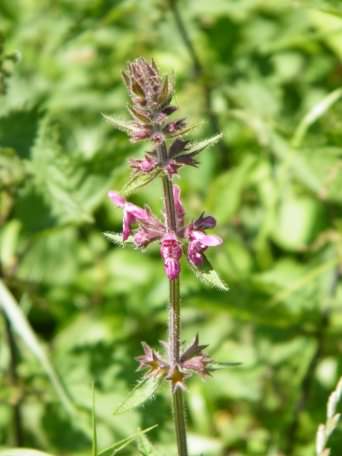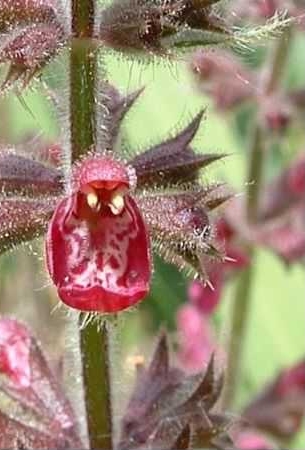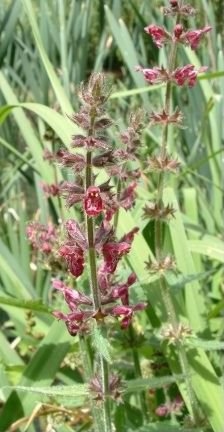


Photos ©2004–
Click two photos above for a larger image
Marsh Woundwort - Stachys palustris
Family - Labiatae, Also known as -
All–Heal, Clown's Woundwort, Downy Woundwort
A hairy perennial plant of shady spots in marshes, bogs, pond margins and damp places growing to 1m (3.25ft) from a creeping rhizome, found over Europe, Asia and North America. Flowering June through to September (maturing to a small nut), in whorls of six or ten at the base of leaf–like bracts, 13–15mm (0.5–0.75in) long, claret or dark red colouration with whitish markings, upper lip hooded and the lower lip subdivided into three lobes, the middle being the largest and and un–notched. Calyx with five near–equal teeth. Leaves are oblong lanceolate unstalked alternate opposite 4–9cm (1.6–3.5in) long, narrow on stalks 2–6cm (0.8–2.3in). Reputed to have a rather unpleasant smell when crushed. Palustris.
Differing from Hedge Woundwort – S. sylvatica in habitats, they can nevertheless hybridises where possible. Preparations of Marsh Woundwort were used as a sedative and styptic. A member of the mint family it has only a very slight smell, unlike Hedge Woundwort which gives off a very strong odour.
BCP do not advise or recommend that any part of Marsh Woundwort – Stachys palustris is eaten or used as an herbal remedy. In past times Marsh Woundwort was eaten, the bulb like swellings at the ends of the rhizomes were boiled, dried and used in making bread.
 |
 |
 |
Photos ©2004– Click two photos above for a larger image | ||
Site design ©1999– Brickfields Country Park - Privacy -